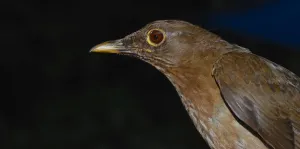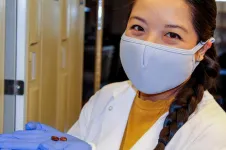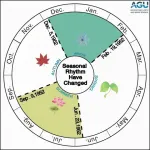(Press-News.org) In the United States, one in 10 babies are born too soon, resulting in complications that can affect their locomotor development and influence such simple tasks as balance, walking and standing later in life. A new peer-reviewed study by Children's National Hospital, published in the Proceedings of the National Academy of Sciences of the United States of America (PNAS), explores exactly what neural circuitry of the cerebellum is affected due to complications that occur around the time of birth causing these learning deficits, and finds a specific type of neurons -- Purkinje cells -- to play a central role.
Up until now, there has been a sparsity of techniques available to measure neuronal activity during locomotor learning tasks that engage the cerebellum. To surmount this challenge, Children's National used a multidisciplinary approach, bringing together a team of neuroscientists with neonatologists who leveraged their joint expertise to devise a novel and unique way to measure real-time Purkinje cell activity in a pre-clinical model with relevance to humans.
Researchers measured neural circuit function by pairing GCaMP6f fiber photometry, used to measure neuronal activity in the brain of a free moving subject , with an ErasmusLadder, in which it needs to travel from point A to point B on a horizontal ladder with touch-sensitive rungs that register the type and length of steps. By introducing a sudden obstacle to movement, researchers observed how the subject coped and learned accordingly to avoid this obstacle. By playing a high-pitch tone just before the obstacle was introduced, researchers were able to measure how quickly the subjects were able to anticipate the obstacle and adjust their steps accordingly. Subjects with neonatal brain injury and normal models were run through a series of learning trials while simultaneously monitoring brain activity. In this way, the team was able to quantify cerebellum-dependent locomotor learning and adaptive behavior, unlocking a functional and mechanistic understanding of behavioral pathology that was previously unseen in this field.
"With this technology, we are able to understand the response of specific cells to external stimuli," said Vittorio Gallo, Ph.D., chief research officer and lead author. "Our findings honed in on Purkinje cell activity for this experiment. But extrapolating further, we can use this technology in the clinic, applying cell-specific stimulations or drugs to understand if each has a protective or harming effect in the brain."
Beyond presenting that normal Purkinje cells are highly active during movement on the ErasmusLadder, the team explored the question of whether Purkinje cells of injured pre-clinical models were generally non-responsive to any kind of stimuli. They found that while Purkinje cells in injured subjects responded to puffs of air, which generally cue the subject to start moving on the ErasmusLadder, dysfunction in these cells was specific to the period of adaptive learning. Lastly, through chemogenetic inhibition, which specifically silences neonatal Purkinje cell activity, the team was able to mimic the effects of perinatal cerebellar injury. Further solidifying the role of these cells in learning deficits.
"Research to date has focused on damage to the cerebral cortex as the cause of learning deficits," said Mark Batshaw, M.D., executive vice president, physician-in-chief, chief academic officer and director of Children's National Research Institute - who was not involved in the research. "Dr. Gallo's lab has been at the forefront in understanding how the cerebellum, in addition to the cortex, is an important contributor to altering normal brain development in premature babies, placing them at greater risk for disabilities. These seminal contributions are critical to understanding how we can improve care to these fragile infants in early life and protect their brain."
"A deeper understanding of the connection between brain injury, Purkinje cell development and circuitry could allow for opportunities to explore better targeting of pharmacological approaches," said Aaron Sathyanesan, Ph.D., research faculty and first author of the study. "Certain targeted drugs could provide added protection to Purkinje cells, mitigating the effects of brain injury on locomotor development following preterm births."
The study results have implications for clinical practice. As the care of premature babies continues to improve, neonatologists face new challenges to ensure that babies not only survive but thrive. They need to find ways to prevent against the lifelong impacts that preterm birth would otherwise have on the cerebellum and developing brain.
Attending neonatologist and author, Panagiotis Kratimenos, M.D., Ph.D., reflected further on the future implications of this research: "With the new generation of extremely preterm babies, more sophisticated methods are essential for protecting their brains. The more we understand regarding these mechanisms, the more we'll be able to help premature babies grow into teenagers and adults with the ability to live a functional life."
INFORMATION:
Media Contact: Valeria Sabate | 301-244-6760
American adults without a college degree have experienced greater reductions in life expectancy when compared to their more-educated counterparts, USC and Princeton researchers have found.
The study reveals that after nearly a century of declining mortality up to the late 1990s, the progress continued into the 21st century for more-educated Americans but stalled for the population as a whole and reversed for the two-thirds of Americans who do not have a college degree.
The study appeared Monday in the Proceedings of the National Academy of Sciences.
The ...
Malaria is the deadliest pathogen in human history. Nearly half the people on Earth are at risk of contracting the disease from the parasites that cause it. But humans aren't the only ones who can get these parasites--different forms are found in other animals, including birds. By studying the DNA of those strains, scientists can get a better picture of how malarial parasites live, which may give clues on how to stop the disease. In a new paper in PNAS, researchers analyzed blood samples of more than 1,000 species of birds from the Andes looking for malaria; they found that the strains of malaria present in a local area don't always neatly align with the types of birds living there.
"Traditionally, we thought that there's ...
(Boston)--Despite the positive advances that anti-human immunodeficiency virus (HIV) therapy, commonly called anti-retroviral therapy (ART) or highly active antiretroviral therapy (HAART), has had on the life expectancy of HIV-positive people, finding a cure for HIV or acquired immunodeficiency syndrome (AIDS) has remained elusive.
"One of the major challenges in curing HIV is that there is a persistent latent reservoir of virus that is not targeted by current antiretroviral treatments and is hidden from immune cells. When treatment is interrupted, this reservoir of the virus allows the HIV ...
Here is a link to a free Altmetric Report on this Research Output
Aging-US published "Hyperbaric oxygen therapy increases telomere length and decreases immunosenescence in isolated blood cells: a prospective trial" which reported that the aim of the current study was to evaluate whether hyperbaric oxygen therapy (HBOT) affects telomere length (TL) and senescent cell concentrations in a normal, non-pathological, aging adult population.
Thirty-five healthy independently living adults, aged 64 and older, were enrolled to receive 60 daily HBOT exposures.
Whole blood samples were collected at baseline, at the 30th and 60th session, and 1-2 weeks following the last HBOT session.
Telomeres length of T helper, T cytotoxic, natural killer and ...
CHAMPAIGN, Ill. -- Tiny fluorescent semiconductor dots, called quantum dots, are useful in a variety of health and electronic technologies but are made of toxic, expensive metals. Nontoxic and economic carbon-based dots are easy to produce, but they emit less light. A new study that uses ultrafast nanometric imaging found good and bad emitters among populations of carbon dots. This observation suggests that by selecting only super-emitters, carbon nanodots can be purified to replace toxic metal quantum dots in many applications, the researchers said.
The findings, published in the Proceedings of the National Academy of Sciences, ...
About one billion people worldwide are at risk for schistosomiasis -- a debilitating disease caused by parasitic worms that live in fresh water and in intermediate snail hosts. A new study finds that the transmission risk for schistosomiasis peaks when water warms to 21.7 degrees centigrade, and that the most effective interventions should include snail removal measures implemented when the temperature is below that risk threshold.
The Proceedings of the National Academy of Sciences published the results, led by Emory University, the University of South Florida and the ...
When it comes to microelectronics, there is one chemical element like no other: silicon, the workhorse of the transistor technology that drives our information society. The countless electronic devices we use in everyday life are a testament to how today very high volumes of silicon-based components can be produced at very low cost. It seems natural, then, to use silicon also in other areas where the properties of semiconductors -- as silicon is one -- are exploited technologically, and to explore ways to integrate different functionalities. Of particular interest in this ...
Determining how rapidly the universe is expanding is key to understanding our cosmic fate, but with more precise data has come a conundrum: Estimates based on measurements within our local universe don't agree with extrapolations from the era shortly after the Big Bang 13.8 billion years ago.
A new estimate of the local expansion rate -- the Hubble constant, or H0 (H-naught) -- reinforces that discrepancy.
Using a relatively new and potentially more precise technique for measuring cosmic distances, which employs the average stellar brightness within giant elliptical galaxies as a rung on the distance ladder, astronomers calculate a rate -- 73.3 kilometers per second per megaparsec, give or take 2.5 km/sec/Mpc -- that lies in the middle of three ...
Inflammation in the body has been linked to the intensity of tobacco smoking among people with HIV, according to a team of University of Massachusetts Amherst researchers.
Krishna Poudel, associate professor of community health education in the School of Public Health and Health Sciences, and colleagues reported positive linear relationships between intensity, duration and pack-years of smoking and inflammation in HIV-positive people. They believe it to be the first, more thorough examination of specific smoking-related variables with the levels of inflammation in this group, while also taking into account highly active antiretroviral therapy (HAART) and other important factors.
The study's findings ...
WASHINGTON--Without efforts to mitigate climate change, summers spanning nearly six months may become the new normal by 2100 in the Northern Hemisphere, according to a new study. The change would likely have far-reaching impacts on agriculture, human health and the environment, according to the study authors.
In the 1950s in the Northern Hemisphere, the four seasons arrived in a predictable and fairly even pattern. But climate change is now driving dramatic and irregular changes to the length and start dates of the seasons, which may become more extreme in the future under a business-as-usual climate scenario.
"Summers are getting longer and hotter while winters shorter and warmer ...






